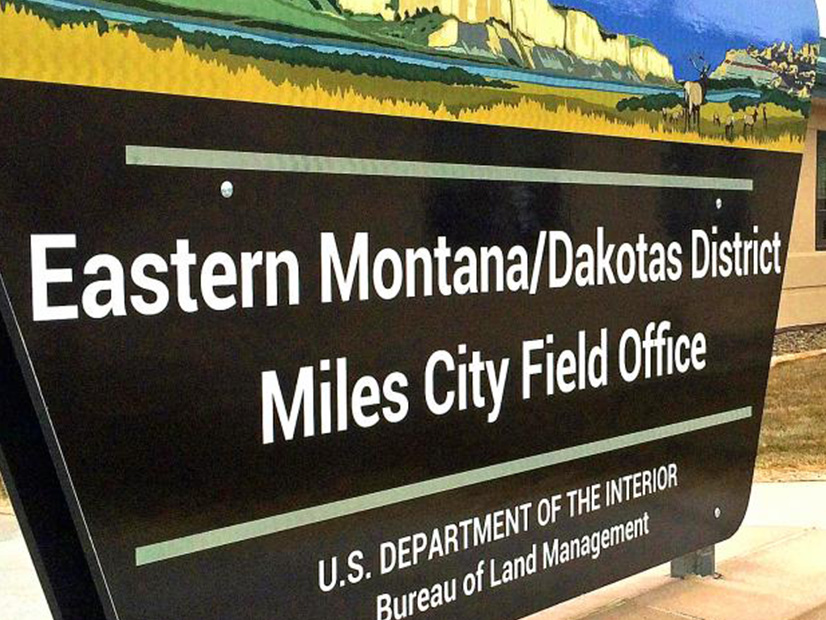
A federal judge has rejected two resource plans from Bureau of Land Management field offices in Montana and Wyoming, saying the agency didn’t disclose the health impacts of burning fossil fuels extracted from the planning zones.
BLM also didn’t consider alternatives that limited or eliminated coal leasing when it analyzed environmental impacts from the resource management plans, U.S. District Court Judge Brian Morris said in an order issued Wednesday. The resource plans were from the Miles City Field Office in Montana and the Buffalo Field Office in Wyoming.
The judge’s order gave BLM up to a year to conduct new coal screening and environmental review of the two resource management plans.
Conservation groups called the judge’s decision a victory.
“That a federal judge ordered the Bureau to consider a no-leasing alternative and disclose to the public how many people will be sickened and die as a result of the combustion of federal coal is groundbreaking,” Melissa Hornbein, a senior attorney at the Western Environmental Law Center, said in a statement.
Hornbein was one of the attorneys representing plaintiffs in the case, which included the Western Organization of Resource Councils, Montana Environmental Information Center, Powder River Basin Resource Council, Northern Plains Resource Council, Center for Biological Diversity, Wildearth Guardians and the Sierra Club.
Coal Producing Region
The Miles City and Buffalo field offices are within the Powder River Basin, which encompasses more than 13 million acres across Montana and Wyoming.
The basin produces about 40% of the coal in the U.S., along with oil and gas, the plaintiffs said in their complaint.
Under all alternatives considered for the Miles City resource plan, 775 million tons of coal from 9,730 acres would be strip-mined over 20 years, the complaint said. Alternatives analyzed for the Buffalo resource plan included strip-mining of 4.9 billion tons of coal from 36,620 acres.
BLM revised land management plans in 10 Western states in 2015 — including the Miles City and Buffalo plans — to add protections for sage grouse, according to Morris’ order. Conservation groups challenged the resource plans in 2016, saying they didn’t comply with the National Environmental Policy Act (NEPA).
The court sided with the plaintiffs and sent the resource plans back to BLM to correct deficiencies. In particular, the court asked BLM to evaluate alternatives that would reduce the amount of available coal and analyze the “downstream” environmental impacts of combustion of coal, oil and gas open to development under the plans.
Additional Analysis
In response, BLM performed additional analysis and approved resource management plan amendments and supplemental environmental impact statements for the plans.
But the conservation groups still weren’t satisfied and sued again in August 2020 in U.S. District Court in Montana.
In its new analysis, BLM looked at alternatives for the two field offices that allotted different amounts of land for coal leasing.
But the amount of coal production expected under each alternative was the same, and so BLM didn’t adequately consider a reasonable range of alternatives, Morris said in his order.
“BLM failed to consider any alternatives that would limit the expansion of existing mines,” Morris wrote.
In response to the previous court order to analyze the impacts of fossil fuel combustion, BLM looked at the effects of greenhouse gas emissions from burning coal derived from the planning areas. But the conservation groups said the analysis should have included other types of pollution, such as sulfur dioxide, nitrogen oxides, particulate matter, mercury and lead.
Morris said NEPA requires an environmental impact statement to consider indirect as well as direct impacts of a proposed action.
“BLM’s failure to consider the downstream impacts proves arbitrary and capricious, especially in light of the court’s prior order,” the judge wrote.



